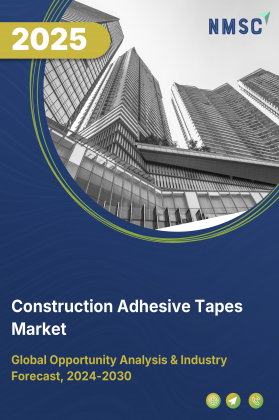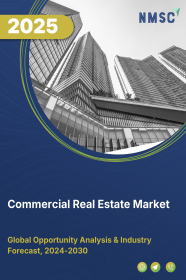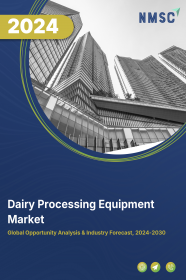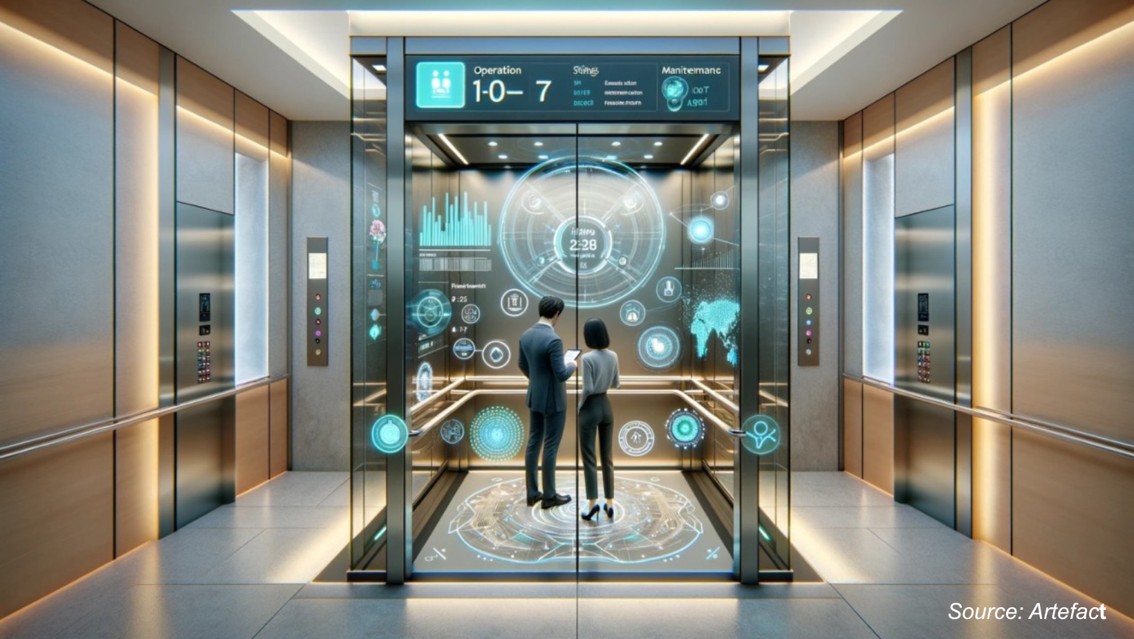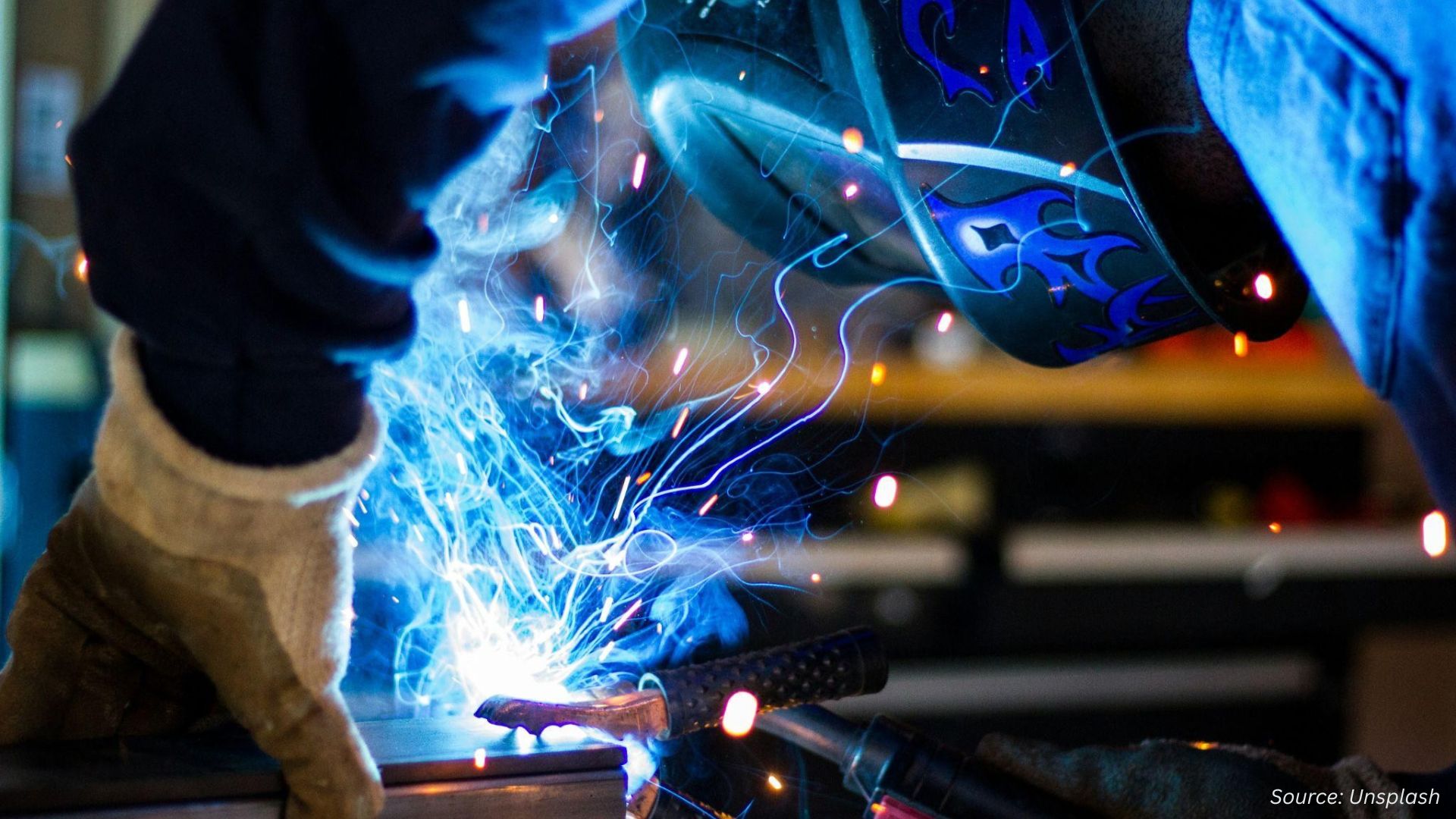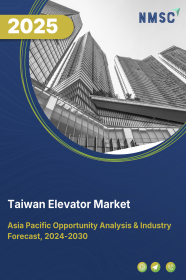
Taiwan Elevator Market by Type (Passenger elevator, Freight elevator, and Others), by Technology (Traction, and Hydraulic), by Service (New Installation, Maintenance, and Modernization), by Capacity (Less than 1500 kg, 1500 to 2500 kg, 2501 to 4000 kg, and Others), by Speed (Less than 1 M/S, Between 1 to 4 M/S, and More than 5 M/S), by Deck type (Single Deck, and Double Deck) by Application (Residential, Commercial, and Industrial) – Global Opportunity Analysis and Industry Forecast, 2024 –2030
Industry: Construction & Manufacturing | Publish Date: 22-Aug-2025 | No of Pages: 129 | No. of Tables: 186 | No. of Figures: 131 | Format: PDF | Report Code : CM1664
Market Definition
Taiwan Elevator Market size was valued at USD 652.66 million in 2023, and is predicted to reach USD 1230.23 million by 2030, at a CAGR of 8.4 % from 2024 to 2030. The elevator market represents a dynamic sector encompassing the design, manufacturing, installation, and maintenance of elevator systems. From conventional traction elevators to cutting-edge smart solutions, this market offers a diverse array of vertical transportation choices customized to suit the distinct requirements of various buildings and infrastructure projects. Stakeholders within the elevator market include manufacturers, suppliers, contractors, architects, building owners, and facility managers.
Manufacturers continuously innovate to enhance elevator performance, safety, and sustainability, while suppliers provide critical components and materials necessary for system construction. Additionally, sustainability considerations, including energy efficiency and material recyclability, are increasingly integral to elevator design and operation. They align with broader environmental objectives and sustainable building practices. Thus, the elevator market is a cornerstone of vertical mobility as elevators enhance functionality, accessibility, and sustainability within buildings and urban landscapes worldwide.
Rapid Urbanization Sparks Urgent Need for Vertical Transportation
Taiwan’s ongoing urbanization is reshaping the structural and functional layout of its major cities. Metropolitan centers such as Taipei, Taichung, and Kaohsiung continue to grow vertically due to space constraints and the need to accommodate increasing population densities. As a result, multi-story residential buildings, commercial towers, and transportation hubs have become more prevalent. Elevators play a critical role in enabling mobility within these high-rise environments, making them essential infrastructure rather than mere convenience. Furthermore, the push for smart urban development has led to the integration of intelligent building systems, where elevators equipped with sensors, energy-efficient drives, and connectivity features are vital components. The urban landscape is no longer just expanding outward but upward—positioning elevator systems as indispensable to sustainable city planning and future-ready infrastructure.
Booming Construction & Infrastructure Development Drives Installation and Modernization
Taiwan’s construction industry is undergoing a transformation, propelled by strong demand for new housing, commercial development, and public infrastructure renewal. Government-driven urban regeneration initiatives and transportation network expansions are adding momentum to the market, particularly in metropolitan and suburban regions. As new projects break ground—ranging from modern apartment blocks to integrated transportation corridors—the demand for efficient and safe vertical mobility solutions intensifies. In addition, many existing buildings, especially those built decades ago, are undergoing elevator modernization to meet updated safety standards, improve energy efficiency, and ensure accessibility for aging populations. This dual-track demand—new installations and system retrofitting—is sustaining long-term growth for elevator manufacturers, service providers, and component suppliers alike. The integration of elevators in both legacy structures and smart developments signals a market shift toward higher sophistication, reliability, and user-centric design.
Aging Building Stock and Structural Limitations Challenge Retrofit Expansion
One of the major restraints in Taiwan’s elevator market is the structural difficulty and regulatory complexity associated with retrofitting elevators in older buildings. A significant portion of Taiwan’s urban housing stock was constructed decades ago, often without provisions for elevator shafts or the spatial allowances necessary for vertical transport systems. Many mid-rise residential buildings, particularly in densely packed urban neighborhoods, were built under outdated codes that did not prioritize accessibility or vertical mobility. Retrofitting elevators into such structures requires substantial civil modification, which may involve altering core structural elements, securing permissions from multiple unit owners, and navigating local zoning regulations. These challenges are compounded by the financial burden of retrofit projects, which often lack government subsidies or incentives. As a result, despite rising demand for accessibility among aging residents and families with mobility needs, the technical and legal barriers to retrofitting continue to limit broader adoption and modernization in this segment of the market.
Green Building Regulations and Energy-efficient Solutions Drive Eco-friendly Elevator Demand
The rising focus on environmental sustainability and green building standards in Taiwan is creating a major opportunity for elevator manufacturers and service providers to develop and deliver energy-efficient vertical mobility solutions. As both government policy and private sector initiatives increasingly prioritize carbon reduction and sustainable urban planning, buildings are being designed—or retrofitted—with technologies that support energy conservation. Elevators equipped with regenerative drives, LED lighting, standby modes, and eco-mode algorithms are becoming highly sought after. These systems not only consume less energy but also support LEED and EEWH (Taiwan's Green Building Certification) compliance, making them attractive to developers aiming for environmental accreditation. Moreover, public sector procurement and large-scale infrastructure projects are now incorporating sustainability scoring in tender evaluations, positioning eco-efficient elevator systems as a strategic advantage. This green transition opens the door for innovative elevator designs that align with climate goals, offering companies a pathway to capture value in Taiwan’s evolving construction and infrastructure landscape.
Competitive Landscape
The Taiwan elevator market comprises various market players, such as Otis Elevator Company (Taiwan) Limited, KONE Elevator Taiwan Co., Ltd., GFC, TK Elevator Taiwan, Taiwan Mitsubishi Elevator Co. Ltd., Hitachi Yungtay Elevator Co. Ltd., Fujitec (Taiwan) Co. Ltd., Hyundai Elevator (Taiwan) Co. Ltd., Toshiba Elevator & Building Systems (Taiwan), Nagaoka Mechanical Co. Ltd., Masada Intelligent Elevator, Sakura Elevator Co. Ltd., CHIHER, Manapang San International Co., Ltd (Yusaki Elevator), Sanyo Elevator Co., Ltd. (Taiwan), amd others.
Taiwan Elevator Market Key Segments
By Type
-
Passenger elevator
-
Freight elevator
-
Others
By Technology
-
Traction
-
Machine Room [MR] Traction
-
Machine Roomless [MRL] Traction
-
-
Hydraulic
By Service
-
New Installation
-
Maintenance
-
Modernization
By Capacity
-
Less than 1500 kg
-
1500 to 2500 kg
-
2501 to 4000 kg
-
More than 4000 kg
By Speed
-
Less than 1 M/S
-
Between 1 to 4 M/S
-
More than 5 M/S
By Deck Type
-
Single Deck
-
Double Deck
By Designation Control
-
Smart
-
Conventional
By Door Type
-
Automatic
-
Manual
By Application
-
Residential
-
Low Rise: 10 floors
-
Mid Rise: 11-30 floors
-
High Rise: above 30 floors
-
Villa/home
-
-
Commercial
-
Airport
-
Hotel & Hospitality
-
Leisure and Education
-
Marine & Port Facilities
-
Medical & Healthcare
-
Multiuse Buildings (Mixed-Use)
-
Retail & Shopping Centers
-
Public Transportation Hubs
-
Office Buildings
-
Low Rise: 10 floors
-
Mid Rise: 11-30 floors
-
High Rise: above 30 floors
-
-
-
Industrial
Key Players
-
Otis Elevator Company (Taiwan) Limited
-
KONE Elevator Taiwan Co., Ltd.
-
GFC
-
TK Elevator Taiwan
-
Taiwan Mitsubishi Elevator Co., Ltd.
-
Hitachi Yungtay Elevator Co., Ltd.
-
Fujitec (Taiwan) Co., Ltd.
-
Hyundai Elevator (Taiwan) Co., Ltd.
-
Toshiba Elevator & Building Systems (Taiwan)
-
Nagaoka Mechanical Co., Ltd.
-
Masada Intelligent Elevator
-
Sakura Elevator Co., Ltd.
-
CHIHER
-
Manapang San International Co., Ltd (Yusaki Elevator)
-
Sanyo Elevator Co., Ltd. (Taiwan)
REPORT SCOPE AND SEGMENTATION:
|
Parameters |
Details |
|
Market Size in 2023 |
USD 652.66 Million |
|
Revenue Forecast in 2030 |
USD 1230.23 Million |
|
Growth Rate |
CAGR of 8.4% from 2024 to 2030 |
|
Analysis Period |
2023–2030 |
|
Base Year Considered |
2023 |
|
Forecast Period |
2024–2030 |
|
Market Size Estimation |
Million (USD) |
|
Growth Factors |
|
|
Companies Profiled |
15 |
|
Market Share |
Available for 10 companies |
|
Customization Scope |
Free customization (equivalent up to 80 working hours of analysts) after purchase. Addition or alteration to country, regional, and segment scope. |
|
Pricing and Purchase Options |
Avail customized purchase options to meet your exact research needs. |

















 Speak to Our Analyst
Speak to Our Analyst



